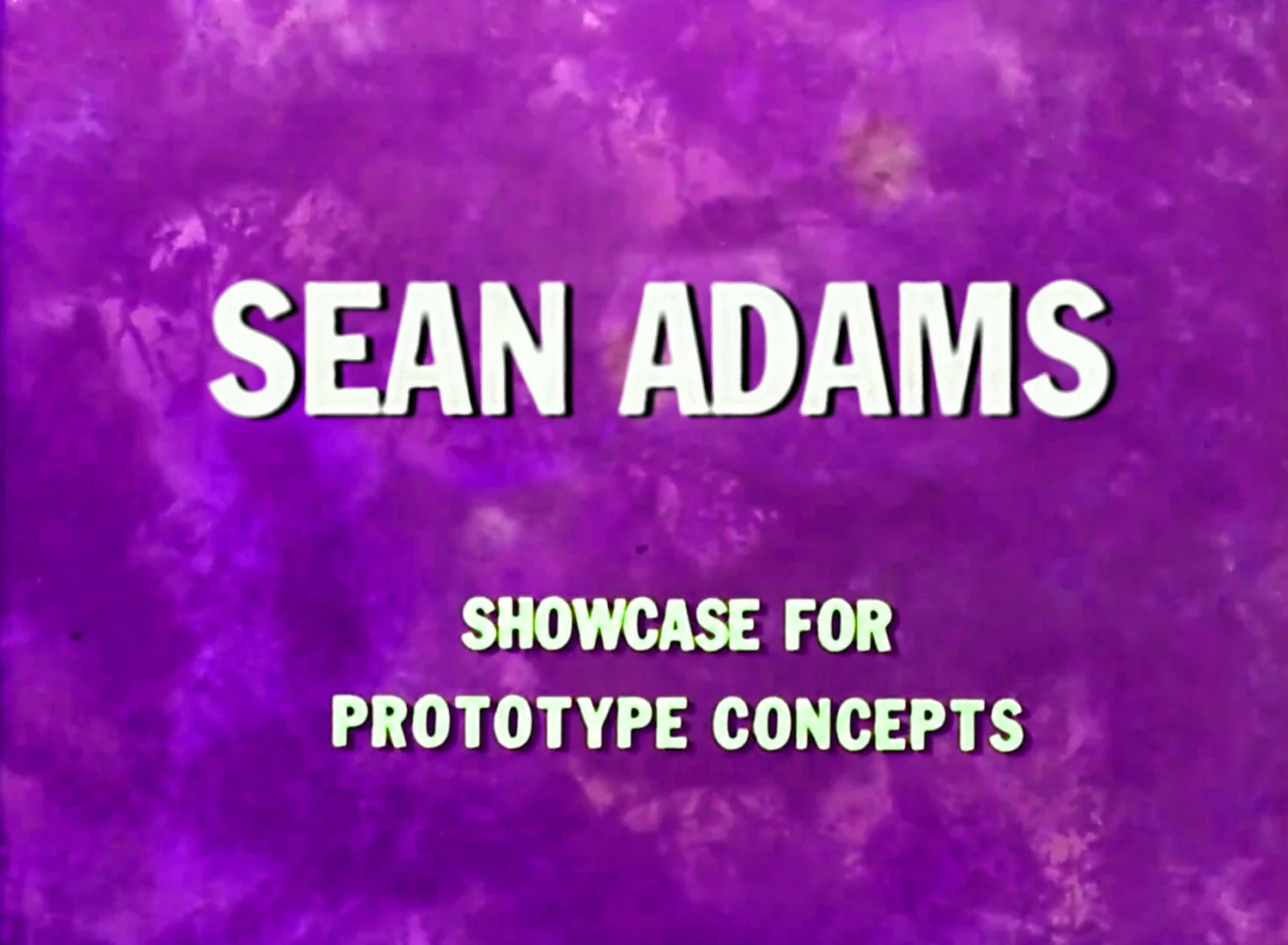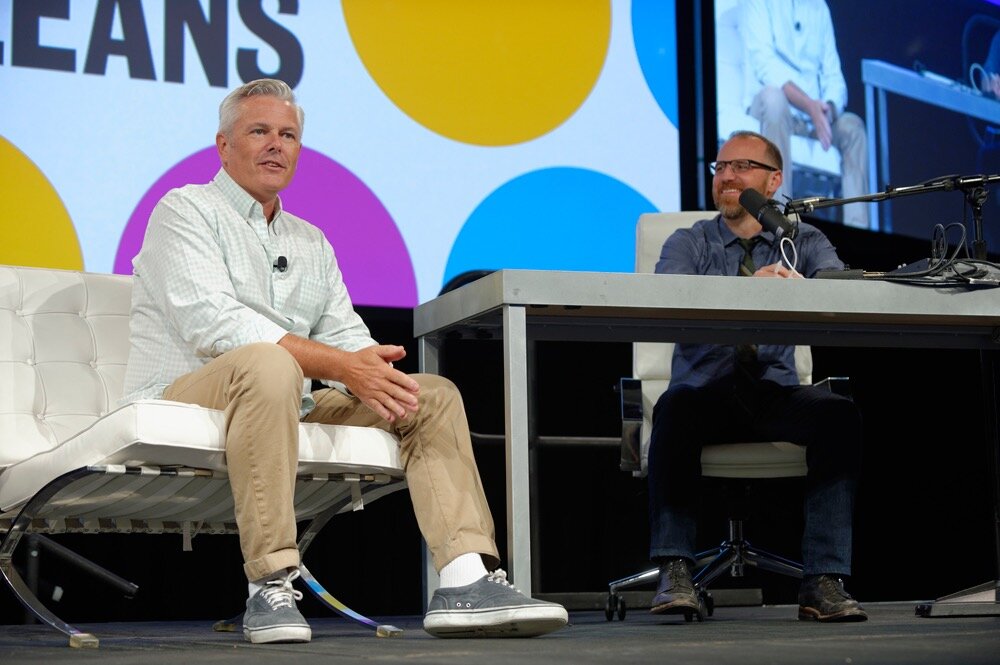AIGA Command X 2015
Emily Potts for Print Magzaine
Each year Command X, AIGA’s reality show-style, live design competition pits seven young designers against one another in daily elimination challenges, and is one of the most anticipated events at the AIGA Design Conference, conceived and produced by Bonnie Siegler of Eight and a Half. Last week we introduced you to the contestants, and just a few days ago we sat rapt as the host, the ever-charming and enigmatic Sean Adams (former president of AIGA’s national board) and a star-studded panel of judges—Aaron Draplin, Robynne Raye, Gail Anderson, plus special guest judges each day—took over the stage.
Challenge 1: design a logo for the New Orleans Historic Voodoo Museum
When in doubt, Google “voodoo.” That was the default move for most of the contestants, who intertwined search results for voodoo culture references in their logos. For instance, Jacob Parr designed an entire typeface named Laveau, after Marie Laveau, a New Orleans icon who made voodoo a transformative religious experience. Amy Nicole Schwartz presented a logo and type treatment that both Draplin and Raye agreed would have wide commercial appeal and stand out in the bustling French Quarter.
But according to the guest judge, the Voodoo Museum’s director Jerry Gandalfo, some of the symbols were misused, information the came a little too late. Ultimately, the fate of the contestants was up to the audience, not the on-stage judges. We had 20 minutes to cast our votes in the AIGA Design Conference app, and moments later bid goodbye to Nate Pyper and Clare Jensen.
Challenge 2: design a new brand identity and packaging design for Southern Comfort
After pulling another all-nighter, the five remaining contestants came back on stage to show their work. The always entertaining designer Marc English was the guest judge, and he had no shortage of comments for the contestants. The presentations were incredibly varied, from Sarah Azpeitia’s floral yet modern label, intended to appeal to young women, to Parr’s more traditional approach, inspired by local hand-lettered signage.
But the standout design came from Russell Shaw, whose lettering and illustration was purposely playful and rough around the edges. “There’s something a little wonky about it,” he said, noting that it almost looks like a drunk person designed it. Draplin agreed and added, “I like the humor and that nothing’s lining up. There’s a certain randomness and comfort there. I like that it’s unafraid to make fun of itself.” His only critique was the color of the label itself—a Christmas-y red, which competed with the amber liqueur inside.
Perhaps the biggest takeaway from this round was English’s critique of the contestants’ presentation styles. He slammed them for using the first-person “I” when explaining why certain design choices were made, even going so far as to count how many “I’s” were said. “Clients don’t give a fuck what you want. Take the ‘I’ out of it,” he hammered.
When the contestants returned to the stage 20 minutes later to hear their fate, Schwartz brought a bottle of Southern Comfort and passed it around so everyone could steady their nerves with a swig. The judges joined in, as did Adams before he delivered the results: Jacob Parr and Elliot Salazar were eliminated, but they grabbed the booze before exiting.
Challenge 3: communicate the importance of changing our culture of gun violence
This was a heavy assignment, and no one in the audience envied the three remaining contestants. The mood was decidedly somber in this presentation as each contestant attempted to put a human face to the gun violence this country has endured, most notably through mass shootings. Shaw presented a smart, tightly packaged campaign that “glorifies those we lost, not the shooters.” His thoughtful presentation was met with some skepticism, but Anderson complimented his effort, saying “You’ve personalized this. I feel like you’re taking the right steps to make a change, and you did it in 24 hours.”
The real conversation started when Schwartz hit the stage with her “Enough” campaign. “Prayers are not enough; our actions are not enough,” she said. The judges, which included guest judge Allan Chochinov (chair of the MFA in Products of Design program at the School of Visual Arts), engaged in a passionate dialogue about how her campaign would work. “I like the singular quality of one word, and the way they can be used as little weapons,” Draplin said of his appeal, but he, along with Chochinov had a hard time grasping exactly how this concept would be executed and create change. Chochinov added, “This is the moment we’re having in design today, and is this going to be enough? What concerns me here is: can a poster change the world?”
In an interesting twist, Azpeitia’s call to action was “It’s Not Enough.” Her impassioned presentation included video clips of speeches made by Bobby Kennedy and President Obama, both reacting to violent attacks committed in America by U.S. citizens, showing how this has been a national epidemic for decades. Azpeitia contrasted the political action of Kennedy’s generation to how apathetic we’ve now become to shootings and violent episodes.
She then asked the audience to look under their chairs, where they found a red piece of paper with a quote by Michael Ian Kaye: “I believe that if I were to expect a politician to use his or her voice to better the world, we should expect the same from ourselves.” Azpeitia asked everyone to hold the paper overhead to show their commitment to the cause. It wasn’t so much a campaign, but an attempt to rally a room full of designers and challenge them to take her message and do something, anything, which left a lot of people shaking their heads. Do what, exactly? There wasn’t much to respond to; Draplin talked about the heaviness of the topic, and Azpeitia ended her presentation by saying, “It really comes down to being more involved with your leaders and becoming leaders yourself.”
All three of the presentations were impactful and well conceived, and although Azpeitia had the loudest battle cry, it wasn’t clear who would win. Ultimately, after complimenting each designer on his or her courage and passion, Adams declared Schwartz the winner of the 2015 Command X. The money, prizes, and notoriety were hers, but all three contestants gave final presentations that made a lasting impact on the audience.







